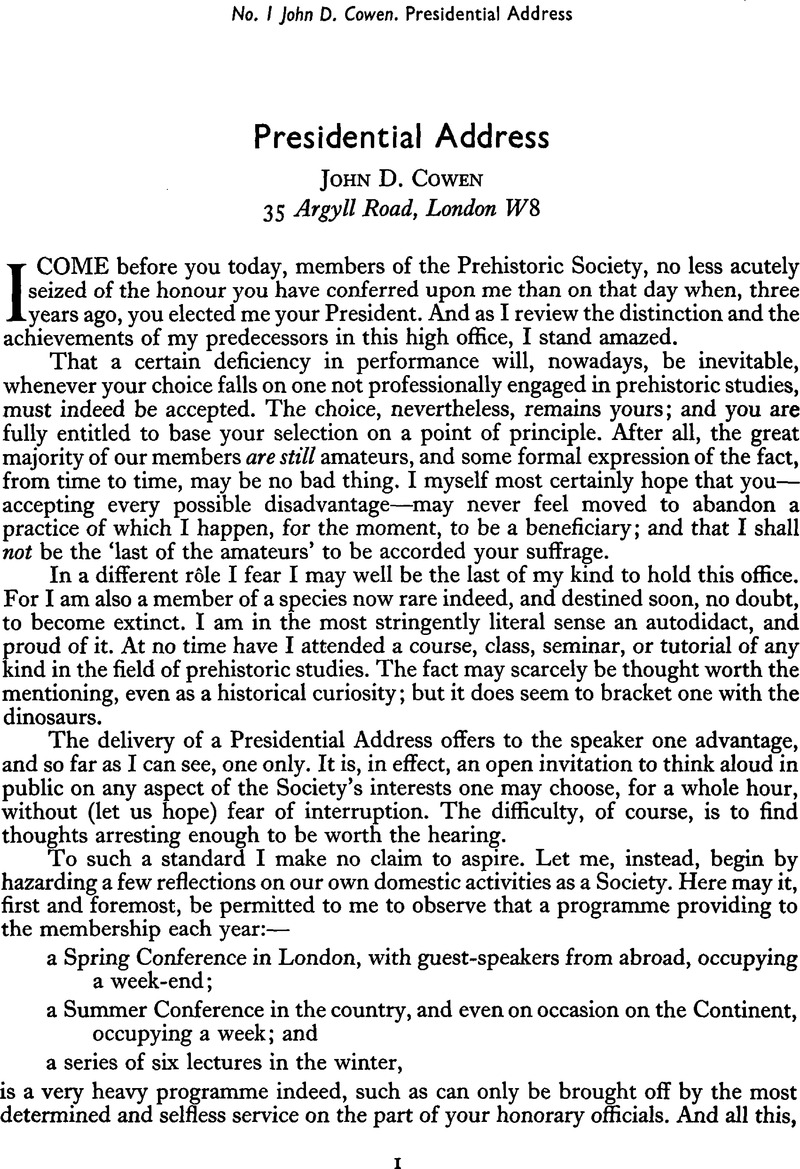No CrossRef data available.
Article contents
Presidential Address
Published online by Cambridge University Press: 27 May 2014
Abstract

- Type
- Other
- Information
- Copyright
- Copyright © The Prehistoric Society 1970
References
page 4 note 1 At this point, as maybe at one or two others, my theme runs alongside, even touches, topics handled at greater length, and at a more philosophical level, by Jacquetta Hawkes in an essay published in the December issue of Antiquity (vol. XLII (1968), 255–62Google Scholar: ‘The Proper Study of Mankind’). If I have made bold to leave my own slender commentary unamended, that is only because it was already set out in an advanced draft of the present notes, before I was aware of her contribution. And, after all, a duet may have greater powers of penetration than a solo.
Be that as it may, I do most heartily welcome the good fortune that enables me here to record the warmest agreement with all she has so trenchantly expressed in her paper; and my appreciation of her approach—at once both philosophic and practical—to a number of issues fundamental to the future health of our discipline.
page 6 note 1 As, in recent months, ProfessorClark, Grahame in World Prehistory (2nd edition: A New Outline, 1969)Google Scholar; or MissSandars, Nancy, Prehistoric Art in Europe, 1968Google Scholar. Both works strikingly exemplify, expressly or by implication, the essential unity of all prehistory.
page 8 note 1 See e.g., Clarke, D. L., Analytical Archaeology, 1968Google Scholar; with full bibliography.
page 11 note 1 The precise date has been debated, but the maximum variation between the extremes now considered possible is, in the present context, too inconsiderable to be worth further pursuing.


